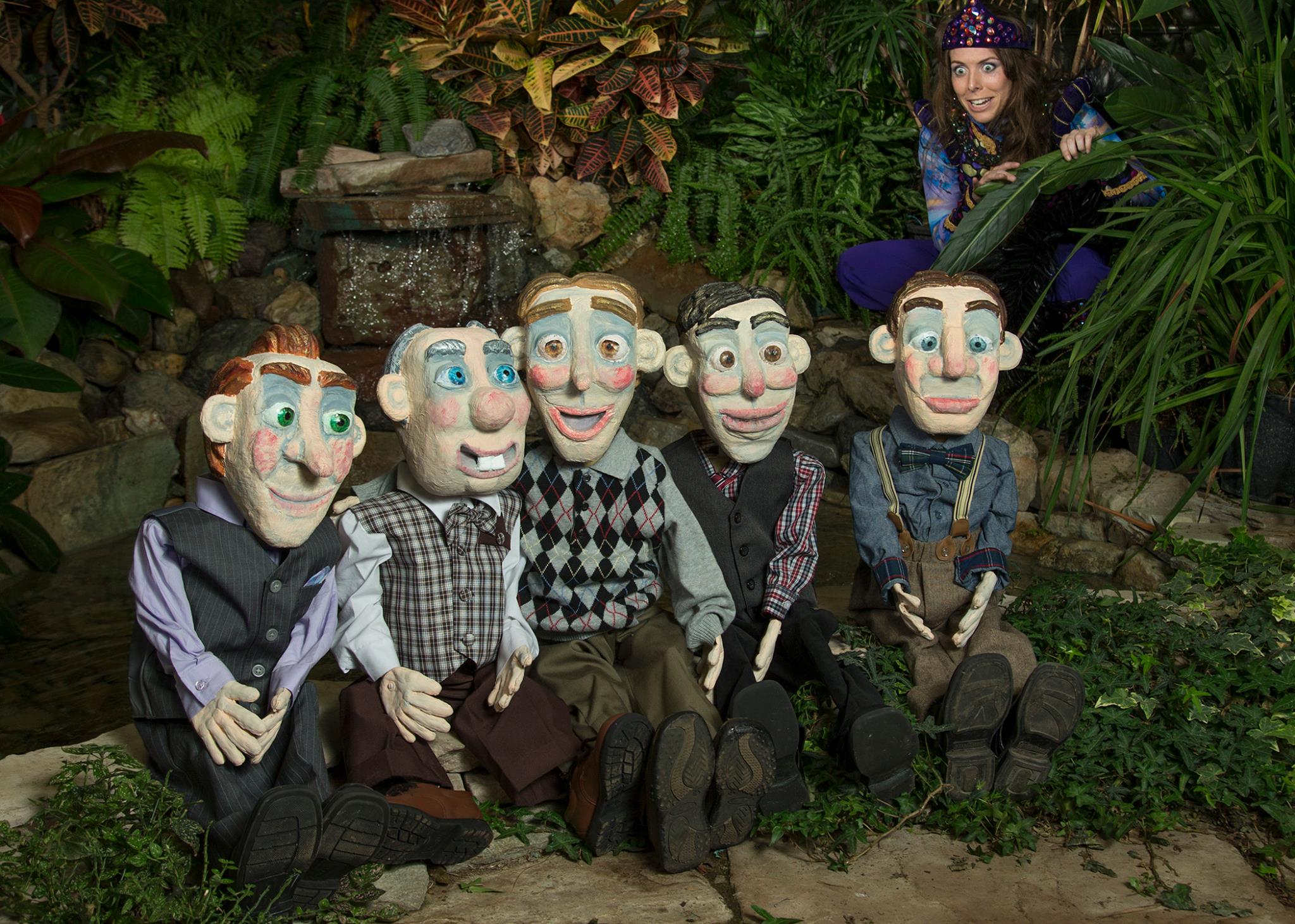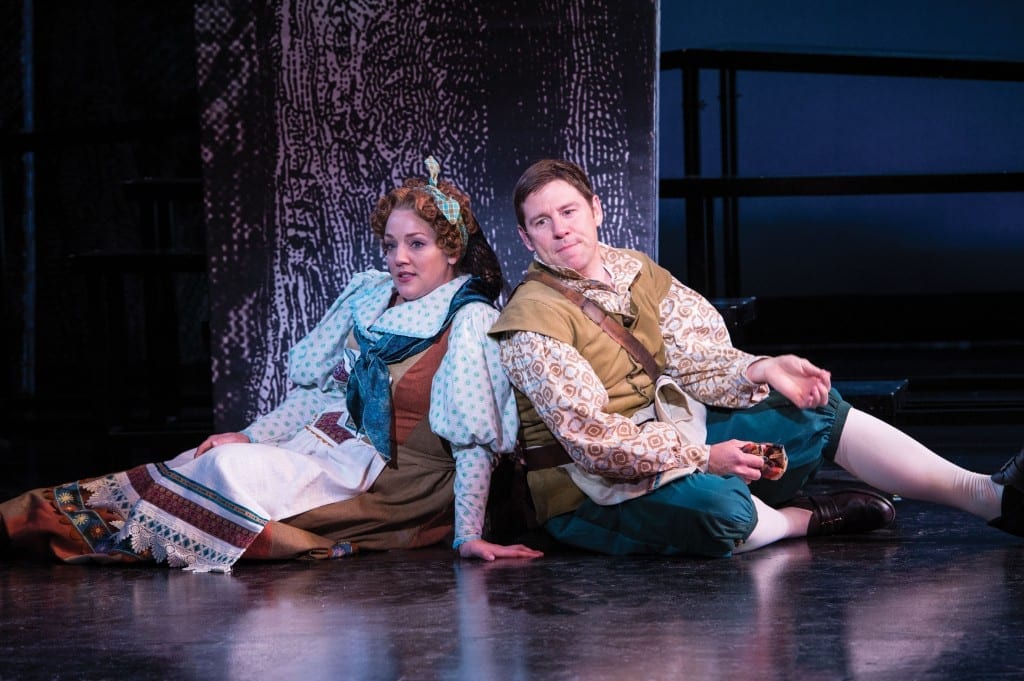PROVO — William Shakespeare himself would be proud of BYU Young Company’s latest venture, A Midsummer Night’s Dream. Directed by Nat Reed, this version gleefully employs the use of puppets to tell this hilarious tale geared toward young audiences—and adults.
The shining stars of the evening were the cast of puppets designed by the director, Nat Reed. The puppets brought a unique twist, breathing new life to an often told tale because each puppet had its own distinct personality and movement. Although all actors played different roles, it was easy to differentiate between the two (or three) characters through the excellent use of movement and costumes. The puppets did not have moving mouths, but instead a static expression-which made each comedic and dramatic moment so much more pure.
Deanne DeWitt designed the costumes, which were a special treat. The troupe of actors rehearsing the play Pyramus and Thisbe matched the outfits their puppets wore; a simple vest, character shoes, and black slacks. Oberon, Titania, and Puck’s costumes were fantastic. Lush lavenders, deep blues, sparkling sequins, a cape of black feathers, and regal headpieces were so outstanding and intricate that it was a joy to see.
The set, also designed by Nat Reed, featured three walls and a “stage” for the troupe of actors to rehearse on. Just like Shakespeare’s show is a play within a play, the set was a stage within a stage. It was functional, easy to set-up, and never distracted from the story.
The BYU Young Company program has been around for 40 years and produces two touring shows each semester: a contemporary production and a Shakespeare play. It’s no surprise then, that the Young Company was able to deliver Shakespeare and make it accessible to adults and children alike. Shakespeare’s work can be difficult. If the actor doesn’t have a strong grasp on what he or she is saying, the audience won’t either. It was refreshing to see an entire cast know exactly the meaning behind each word and line. Each cast member drew appropriate attention to everything they said. In fact, they worked so well as an ensemble that even on opening night the unity was unmistakable.
Chandra Lloyd (as Bottom/Egeus/Pyramus) was the standout performer of the evening. Her grasp on the text, language, and delivery was admirable. She portrayed her many character choices and puppet movements with such finesse that I saw beyond the actor holding the puppet and simply focused on the characters she had created. Mary Bosen, (as Puck), had the entire show riding on her shoulders. She was the narrator who, during most of the show, spoke in modern English to help keep the story on track for the younger audience members. Her energy, vibrancy, and improvisational skills are marvelous. Moreover, she handled comedic errors (a puppet’s head flying off, for instance) with skill and panache.
Aaron Fisher, (as Snout/Lysander/Wall), effectively used subtlety to his advantage in his production, creating vibrant and realistic characters throughout the evening. Macey Hanson (as Titania) portrayed her characters with a solemn nobility and a flirtatious touch. Bryce Revelli (as Peter Quince/Demetrius/Lion) eschewed simplicity and voraciously created a character that was humorous yet believable. Emily Simons (as Starveling/Hermia/Moonshine/Mustardseed) helped tell the story with wit, flair, and fun.
There were a few minor distractions to the evening. First, there was a soft soundtrack that played throughout the entire piece. It had hints of medieval/fantasy sounds and music, but it was so soft that it sounded like someone’s cell phone was going off the entire show. Also, King Oberon (played by Jacob Tubbs), had a deep, resonating voice that was easy to hear and commanded attention. Although his stage presence was strong, there were a small number of times throughout the evening where it was difficult to understand the text, as Tubbs struggled to enunciate his lines.
But seeing beyond this simple minor distractions, BYU Young Company has an incredibly solid show on their hands. If you’re a fan of Shakespeare and innovative theatre—that’s not just for children—A Midsummer Night’s Dream is a must-see this season.









